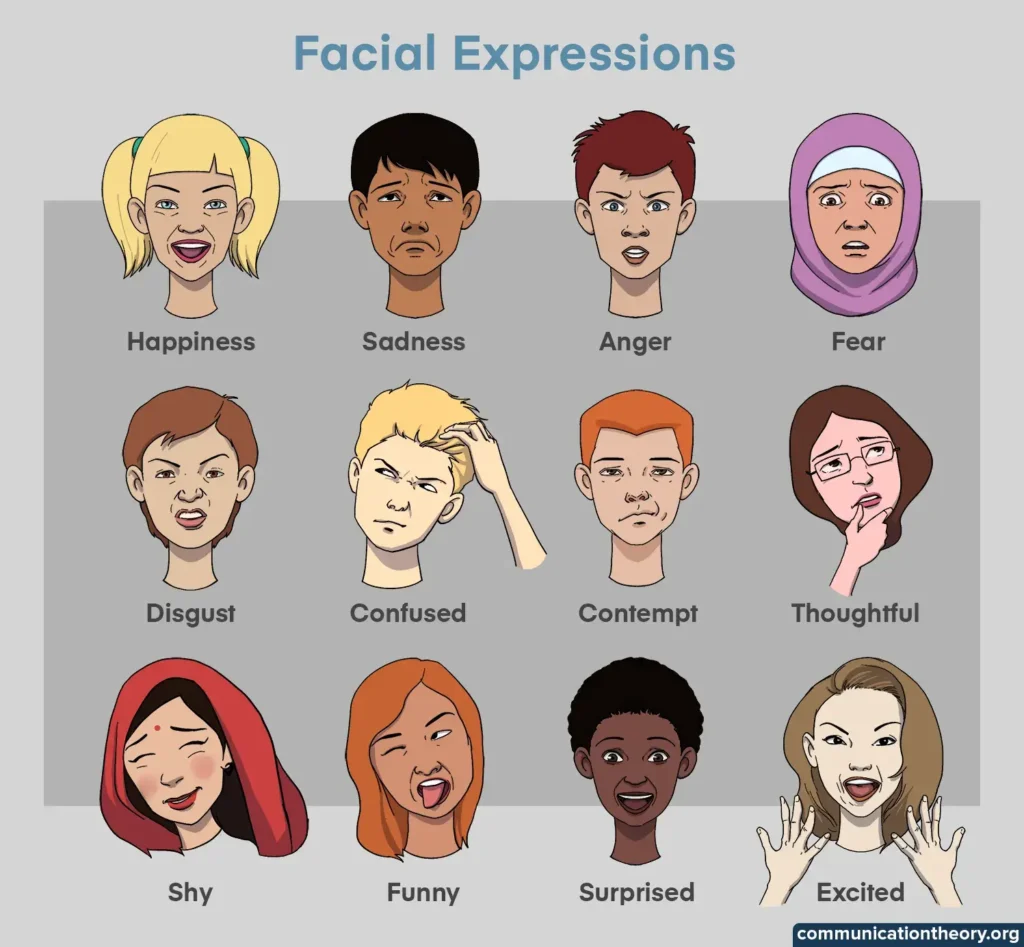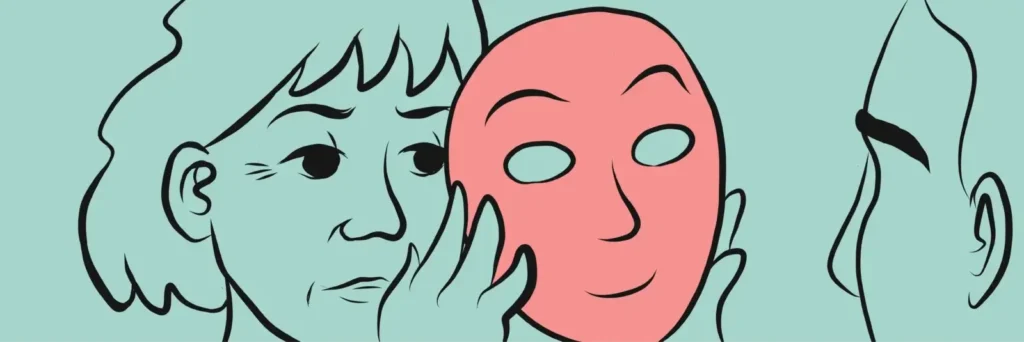
Did You Know?
Your face is like an advertisement. It advertises your feelings to the world. You might not say a word. But your eyebrows can say surprise. Your mouth can say happy. Your eyes can say sad. We all read these facial expressions. We read them without even thinking. Our face tells our inner story. It expresses how we feel. It also provides indicators of our personality. Let’s take a closer look at what your face is conveying. It is more interesting than you think.
The Face’s Language: Basic Emotions
The face is incredible. It can make so many different expressions. There have been many studies over the years about the face. Some facial expressions are universal. People all over the world can understand them. They represent basic emotions. There are usually six basic emotions. They are happiness, sadness, anger, fear, surprise, and disgust. When you feel happy, you smile. These facial expressions hardwire into us as humans. We understand these facial expressions from a very early age.

Subtle Signals: More Than Basic
In addition to these larger emotions, we express many other, subtler signals through our faces. For example, tightness in a person’s mouth may signal tension. Raised eyebrows may signal interest. A slight tilt of the head may mean the listener is of more than average interest or concern. These micro-emotions occur very quickly, and we may even sometimes only see them for a fraction of a second, but they convey the strongest signals expressing what we are feeling. Occasionally, they contradict what we say. Someone may tell us they are fine, but their face may express just a hint of sadness. Noticing these small signals can say a lot.
Read more: Signs of Very Low Intelligence
A Concentration on the Eyes: Their Influence
Our eyes are perhaps the most expressive part of our body, often referred to as the “window to the soul”. You can gather a lot about how an individual is feeling based on their eyes alone. Even the size of the eyes can display an array of feelings. Someone can have wide eyes to show they are shocked or afraid; squinted eyes to show they are angry or suspicious; and happy eyes can “sparkle” or simply look bright and open.
Sadness can also be communicated through down-turned eyes. Even where someone is looking can provide meaning, too. If they look away from your direct gaze, then that could mean that they are disinterested in either the conversation or the person; the person may feel uneasy. Conversely, if the individual looks directly at you, then this is, in turn, meaningful and suggests they want to be actively engaged.
The science of facial expressions: the art of reading people
The ability to read someone’s face accurately when it comes to interpersonal relationships is important. By reading another person’s face, we are able to check in to some degree on how the other person feels and respond accordingly. So, for example, we can express our sympathy for someone sad, or we can be cautious about how to respond if someone seems angry. The ability to read facial expressions is learned as children and forms part of the attachment and connection process we develop with others in our social world.
The general view is that people who can read facial expressions accurately generally are seen as having superior social skills and tend to display higher levels of empathy in their interactions with others. The ability to read facial expressions is of value when trying to comprehend how another person feels and to establish a social connection.
Cultural Diversity: A Psychological Perspective
While basic emotions may have similar aspects across cultures, cultures can differ in terms of expressiveness and the type of expressiveness. For example, some cultures may expect or, at a minimum, tolerate public displays of strong emotional expressiveness, while other cultures may discourage public emotional expressiveness. Furthermore, people may have to learn to suppress their expression of emotions due to the language of their culture. And in many cultures, there are even levels of expressiveness that vary in many social situations, depending on the culture itself. Even the rules of eye contact differ in various cultures.
What the Numbers Show: Current Statistics
Further research continues to investigate the connection between facial expressions and emotions. A meta-analysis of facial feedback theory by 2023 indicates that facial expressions can help influence our emotions. For example, if you force yourself to smile, it might make you feel a little happier. There have also been a number of studies (using facial recognition technology) that have accurately identified basic emotions based on facial expressions across cultures with a high degree of accuracy; there is still difficulty interpreting more subtle emotions.

Understanding Hearts Through Faces – An Islamic Perspective
Islam emphasizes that we should always be sure that our hearts are sincere, but while our faces may express outward indications, that is merely a mitigating circumstance for a larger internal experience, within our hearts. However, Islam does encourage kindness and a pleasant face. Our beloved Prophet Muhammad (PBUH) said, “Your smile for your brother is an act of charity”. So as you can see, face values matter in developing good relations.
Also, while outward signs may indicate feelings, we are advised against judging someone based solely on their outward expression. Islam instructs us to have good feelings and thoughts of others’ intentions towards us and to give them the benefit of the doubt. Only God (SWT) knows what is truly in the heart of a person. After all, we may only be interpreting the outward signs, but the true sincerity of a person’s heart must be interpreted wisely and correctly since sincerity exists in the innermost chamber of the heart.
Read more: 10 Hidden Fears That Control us
The Mirror of the Soul: A Living Exhibit
Your face is a walking display of your mental and emotional state. Your face communicates your feelings, emotions, thoughts, and your intent in your actions. Knowing and understanding facial cues in yourself and others will greatly assist your communication and the quality of your relationships. Observe all the subtle movements. Watch the dynamics of the eyes. Your face has something to say all the time. When you are willing to take on the challenges of learning to read the face, you will have developed a new level of awareness through your engagement with the world.
Conclusion: Bring Life to Your Expressive Self
Your expression in your face is a natural part of you and a way to connect with others; your face is a powerful instrument to communicate your feelings without using language. Accept your expressive face. Remember, you are always giving signals. Observe the many faces around you. You will find rich language details of communication. It is always there, being communicated verbally – the words we see lie right on our faces.



Leave a Reply